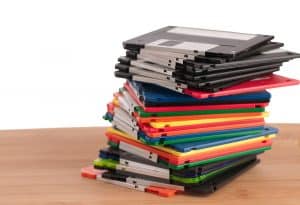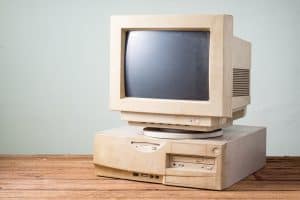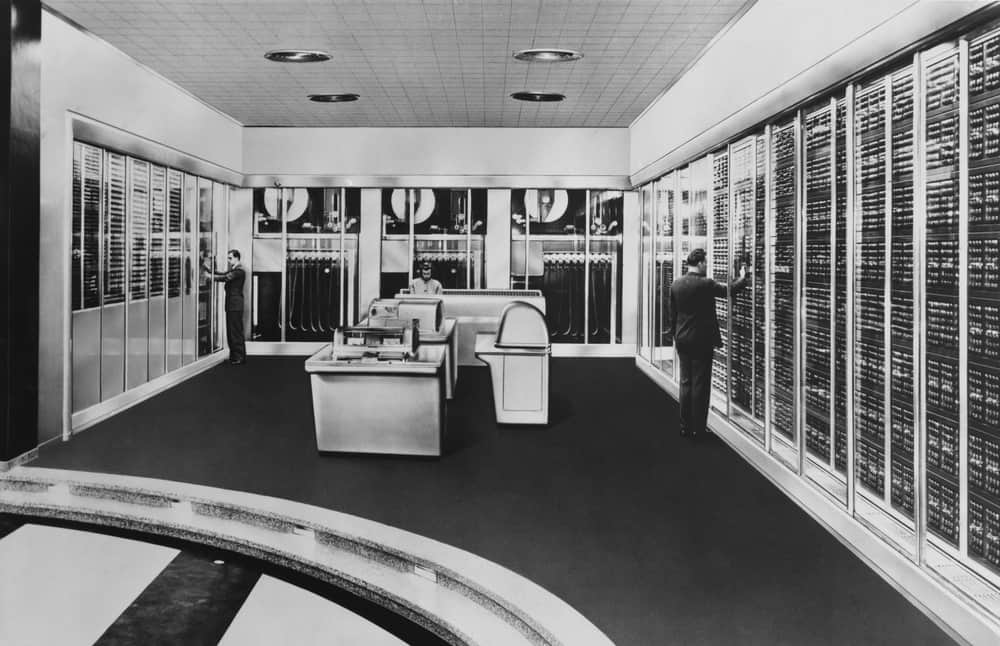A Brief History of the Computer
 The computer concept dates back as far as 2500 BC, but it wasn’t until the 19th century that modern computer science began to emerge. Despite getting off to a slow start, the computer as we know it has changed at lightning speed!
The computer concept dates back as far as 2500 BC, but it wasn’t until the 19th century that modern computer science began to emerge. Despite getting off to a slow start, the computer as we know it has changed at lightning speed!
Charles Babbage, an English mathematics professor, can be credited with creating the basic framework of the computers we know today. He designed the Analytical Engine, which, according to Wikipedia, “incorporated an arithmetic logic unit, control flow in the form of conditional branching and loops, and integrated memory, making it the first design for a general-purpose computer that could be described in modern terms as Turing-complete.”
From there, the history of computers can generally be classified into three generations. Each generation has a fairly distinct pattern of producing a new product or improving drastically on an existing model.
First Generation
The first generation began with the work of Dr. John V. Atanasoff and Clifford Berry in 1937. They built the Atanasoff-Berry Computer (ABC). In 1943, an electronic computer named Colossus was built for the military, just before the first general purpose computer, the Electronic Numerical Integrator and Computer, was built by John Mauchly and J. Presper Eckert. By all accounts, this computer weighed 30 tons and had 18,000 vacuum tubes for processing. The lights in sections of Philadelphia dimmed briefly when this computer was turned on for the first time.
Computers of this generation could only perform a single task and had no operating system. Mauchly and Eckert were then given funding from the Census Bureau to build the UNIVAC, the first commercial computer for business and government applications. This model bumped computers into the next generation.
Second Generation
In 1947, thanks to William Shockley, John Bardeen and Walter Brattain of Bell Laboratories, transistors replaced vacuum tubes. They were much more reliable and provided the foundation for further, exciting development. The Universal Automatic Computer was the first computer for commercial use and was introduced to the public in the late 1940s. Just a few years later in 1953, the International Business Machine (IBM) 650 and 700 series changed the world of computers forever. Introducing over 100 computer programming languages, these computer models had memory and operating systems. By the end of this generation in 1962, storage media and printers were available.
 Third Generation
Third Generation
The third generation, which included present-day, gave us integrated circuits, allowing computers to become smaller, more powerful, more reliable, and more capable. In 1980, Microsoft Disk Operating System (MS-Dos) was born and IBM brought us the personal computer (PC) for home and office use just one year later.
1984 was the year of Apple and we welcomed the Macintosh computer with its icon driven interface. Windows was not far behind in response to Apple’s GUI computer. Computer development went into hyperdrive from there. Compaq introduced the Deskpro 386 in 1986. Tim Berners-Lee developed HyperText Markup Language (HTML) in 1990. By 1993, the Pentium microprocessor helped advance the use of graphics and music on personal computers.
 For frame of reference, Google was created in 1996 by Sergey Brin and Larry Page at Stanford University, leading to the explosion of world wide web use. By 1999, “Wifi” became a part of the computer language and wires began to disappear. Based on these new developments, Apple unveiled its Mac OS X operating system in 2001, which “provided protected memory architecture and pre-emptive multi-tasking, among other benefits,” according to Live Science.
For frame of reference, Google was created in 1996 by Sergey Brin and Larry Page at Stanford University, leading to the explosion of world wide web use. By 1999, “Wifi” became a part of the computer language and wires began to disappear. Based on these new developments, Apple unveiled its Mac OS X operating system in 2001, which “provided protected memory architecture and pre-emptive multi-tasking, among other benefits,” according to Live Science.
Microsoft responded, of course, with Windows XP, which had a significantly redesigned GUI. When 64-bit processors became available to the consumer market in 2003, the stage was set for Mozilla’s Firefox, Microsoft’s Internet Explorer, Facebook, and Youtube.
By 2006, Apple introduced the MacBook Pro, its first intel-based, dual-core mobile computer and Nintendo’s Wii game console hits the market. 2007 brought us the iPhone where many computer functions were available in a device the size of our hand. Tablets became universal in 2010 and the rest is history.
Needless to say, computers have come a long way since the 20 x 40 foot room that held the world’s first computer. If you’re interested in learning more, click here.
And then some,
Your Friends @ OBP


what about the antikythera mechanism